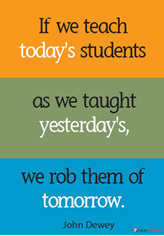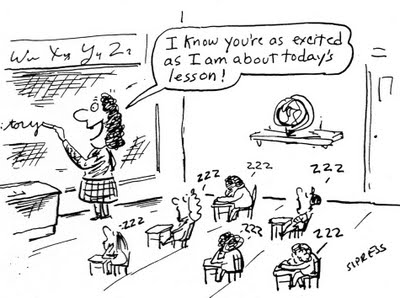Before beginning my inquiry, I was somewhat lost as to where to begin and what strategies to implement to engage students. When I was in elementary school, there was much less emphasis on student-centred learning and more emphasis on direct instruction. Through observations during my practicum, and reading articles and textbooks, I learned about many different ways to engage students. However, I was still unsure about how to effectively implement these strategies in a classroom. It wasn’t until I began planning and teaching lessons that I felt comfortable with what I had learned.

Through my research, I have become familiar with many strategies and techniques to engage students and ensure participation remains high. All of my resources show that increased student engagement leads to increased academic achievement.
Teachers can achieve this by:
- creating a safe and respectful classroom environment
- fostering positive relationships in the classroom
- getting to know their students –> personalized learning!
- making connections to the real world –> authenticity!
One of my resources, an article by the Ontario Ministry of Education (2011), polled students and used their voices in explaining what is important to students and how to keep them engaged. The results were consistent with all of the research and data that I collected from other articles and books on this topic.
 Students want to:
Students want to:
- solve real problems
- engage with knowledge that matters
- make a difference in the world
- be respected
- see how subjects are interconnected
- learn from and with each other and people in their community
In order to achieve these larger goals, I looked at achieving student engagement by focusing on individual lessons. Research shows that in order to increase engagement during lessons, teachers must:

- Integrate technology –> I have used technology during most of my lessons and something as simple as hooking students’ attention with an interesting image on the screen can have a significant impact. For instance, I know that I have avid readers and movie-goers in my class so during a lesson on historical fiction, I put up images of some movies and books and we discussed how to determine whether they are part of the historical fiction genre or not.

- Use fun ways to group/pair students –> I was most familiar with the numbering method or simply pairing up with a desk partner. Although my students generally enjoy collaborative work no matter how they are grouped/paired, I have used some techniques that I came across during my research that really raise the energy level! For instance, one way to pair students is to use images of things that interest them (athletes, cars, games) and cut them in half. Place them in a basket and have students choose a piece. When they find the other half of their image, they have found their partner too!
- Allow for “wait time” when expecting an answer –> Prior to my inquiry, I did not consider the positive effect that wait time could have on the quality of student responses. I have incorporated this into my lessons as “think time” and have noticed a significant increase in the number of student responses during my lessons. Similarly, an instructor suggested guided visualization and although I have only used it once, this is also something that my students seemed to enjoy very much.
- Give quiet students a voice –> One of my inquiry resources discussed the importance of choral responding as a strategy to engage quieter students. I have used this technique multiple times and it is a great way to release energy while giving all students an opportunity to participate and be fully engaged. However, sometimes it can be difficult to tell which students are responding so I try to circulate as much as I can to encourage participation. This strategy has worked very well for me during the closing of lessons to check for understanding or to summarize important terms.
- Check for understanding –> Ensuring that students understand the material is very important. I can recall one of my first lessons where I simply asked the class if they understood what to do and they simply nodded. During the activity, many were unsure and asked questions for clarification. I later thought how easy it could have been for the quieter students to feel lost and confused if others had not spoken up. This experience was very important for me as I began to use many more visuals and regular checks for understanding. After instruction, I ask students if they can paraphrase or elaborate on what has been said. This is not limited to my own instruction as I try to implement this strategy when students are speaking as well. After a student has spoken, I ask the class if someone can add to what has just been said. This creates more of a student-centered learning environment as it is the students who are carrying the discussion.
Of course, all of this is an ongoing process and strategies that work with one class may not be as effective with another. As well, certain strategies wear off and become monotonous for students so being familiar with new research and findings is of utmost importance for all teachers, new and old. “Teachers must adopt a lifelong learning mindset to continually push themselves to learn new ways of facilitating learning and increasing student engagement” (Murphy, 2011).

https://docs.google.com/presentation/d/15WrmshguszIWdJ9Zva0FsE6mW2_VcJDbNvvyJxWOyOo/edit?usp=sharing
 her great resource by Mary Kim Schreck is her book titled You’ve Got to Reach Them to Teach Them: Hard Facts About the Soft Skills of Student Engagement. Some of the main topics covered in this book include the importance of relationships, emotions, and environment. Establishing healthy relationships is key to achieving student success. Schreck discusses various ways as to how teachers can help students bring out their best. By doing so, this will ultimately create a positive environment in the classroom. By allowing them to make mistakes, take risks, and feel confident, students will be able to immerse themselves in their learning. This book makes strong connections to real-life situations and is relevant due to its inclusion of journal entries and comments directly from students. Schreck uses scientific research to prove her claims and discusses various strategies that can be implemented in the classroom to increase student engagement and academic achievement.
her great resource by Mary Kim Schreck is her book titled You’ve Got to Reach Them to Teach Them: Hard Facts About the Soft Skills of Student Engagement. Some of the main topics covered in this book include the importance of relationships, emotions, and environment. Establishing healthy relationships is key to achieving student success. Schreck discusses various ways as to how teachers can help students bring out their best. By doing so, this will ultimately create a positive environment in the classroom. By allowing them to make mistakes, take risks, and feel confident, students will be able to immerse themselves in their learning. This book makes strong connections to real-life situations and is relevant due to its inclusion of journal entries and comments directly from students. Schreck uses scientific research to prove her claims and discusses various strategies that can be implemented in the classroom to increase student engagement and academic achievement.

 From Tired to Inspired by Mary Kim Schreck teaches strategies to engage students in literacy. However, as with some of my other resources, the strategies in this book can also be transferred across various subject areas. Schreck describes the importance of improving the quality of “talk” in the classroom. There needs to be a change in who is doing the talking and how it is structured. Teachers need to encourage an inquiry-based approach to learning and move away from interrogations. Conversations are a high-quality opportunity for deeper learning and teachers needs to provide opportunities for students to question, converse, and be active listeners. In accordance with 21st century learning, teachers need to move away from the front of the room, both figuratively and literally. However, when teachers are providing instruction, responding with something as simple as “yes, and…” as opposed to “yes, but…” to a student’s response can go a long way. If educators can teach students through rehearsals (i.e: possible methods of solving problems), modeling (i.e: there can be more than one right answer), and role-playing activities, students can become active learners and use class discussions effectively to engage with the learning material.
From Tired to Inspired by Mary Kim Schreck teaches strategies to engage students in literacy. However, as with some of my other resources, the strategies in this book can also be transferred across various subject areas. Schreck describes the importance of improving the quality of “talk” in the classroom. There needs to be a change in who is doing the talking and how it is structured. Teachers need to encourage an inquiry-based approach to learning and move away from interrogations. Conversations are a high-quality opportunity for deeper learning and teachers needs to provide opportunities for students to question, converse, and be active listeners. In accordance with 21st century learning, teachers need to move away from the front of the room, both figuratively and literally. However, when teachers are providing instruction, responding with something as simple as “yes, and…” as opposed to “yes, but…” to a student’s response can go a long way. If educators can teach students through rehearsals (i.e: possible methods of solving problems), modeling (i.e: there can be more than one right answer), and role-playing activities, students can become active learners and use class discussions effectively to engage with the learning material.


